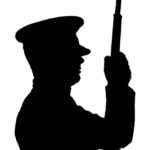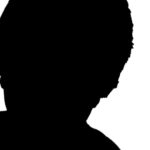William Golding’s novels are scary. There are moments of sheer terror across many of his books but this terror does not come from the supernatural – there are no murderous clowns, poltergeists or vampires. The fear in his novels come from, as he writes in Lord of the Flies, ‘the darkness of man’s heart’. As Stephen King describes in his introduction to the centenary edition, while reading the book, he ‘was in terror’. The resonances of Lord of the Flies can be found in many of King’s books, including It, which does feature a terrifying clown, and in his short story ‘Children of the Corn’, about a group of murderous children. Indeed, evil children, either acting alone or in savage groups are a common trope in horror culture, and it is often clear to see the influence that Golding’s first novel has had on these examples.
The boys in Lord of the Flies are terrified of ‘the beast’ which is variously described as the ‘beastie’, a ‘snake-thing’, and ‘some sort of ghost’. Ralph tries to convince the littluns that ghosts don’t exist, but they all raise their hands in the gloom when they are asked if they believe. Their fear of the beast is heightened by the dark, and when Ralph, Jack and Roger finally see the beast, they flee in panic down the dark mountain: ‘“The beast had teeth”, said Ralph, “and big black eyes”.’ Simon recognises that the feared beast is a myth and points out that ‘“maybe there is a beast […] maybe it’s only us”.’ Simon’s belief leads to a moment of genuine horror when he runs out of the forest directly into the savage dance around the fire.
‘At once the crowd surged after it, poured down the rock, leapt on to the beast, screamed, struck, bit tore. There were no words, and no movements but the tearing of teeth and claws.’
The end of the book is equally terrifying; Jack and his hunters’ pursuit of Ralph while the island burns is heart-pounding as the reader turns page after page of this grotesque hunt. Ian Gregor recalls Golding talking about his inspiration for the book: ‘He said he had two pictures in his mind: one of a small boy waggling his feet in the air on an empty beach in sheer exuberance; the other, of the same boy crawling bloodstained through the undergrowth, being hunted to death’. As Ralph runs, the thought of a ‘stick sharpened at both ends’ reverberates through his mind and there is no doubt as to his fate if caught. The deadly chase is only averted by the arrival of the Naval Officer, currently participating in his own horrific war.
The pursuit of Ralph is echoed in Golding’s second novel, The Inheritors, with the final chase of Lok and Fa, our Neanderthal heroes. The horror of being human is revealed when Homo Sapiens invade the island of a family group of gentle Neanderthals, who are unable to comprehend the terror inflicted upon them. In a nightmarish moment, Lok, already afraid of the river, sees a darkness in the water, before realising it is the body of the family’s matriarch, the old woman.
‘The darkness became a thing of complex shape, of sluggish and dreamlike movement. Like the specks of dirt, it turned over but not aimlessly… The arms moved a little and the eyes shone as dully as the stones. They revolved with the body, gazing at the surface, at the width of deep water and the hidden bottom with no trace of life or speculation.’
Lok and Fa search for the missing children, Liku and the baby – the new one –, who have been kidnapped by the intruders. Fa watches the New People through the undergrowth, frozen with fear, and hides Lok’s face so he can’t see what she sees: ‘Fa glanced sideways quickly and her face was like the face of a sleeper who wrestles with a terrible dream’. Fa is witnessing the unimaginable horror of Liku being consumed by the humans. Golding does not describe this scene, and it is left to the reader’s imagination.
The narrative shift at the end of the book to the perspective of the humans questions the nature of fear. They refer to the Neanderthals as ‘devils’ and demonstrate that they are afraid of these ‘creatures’, despite their superior intellect and weaponry. For the first time, Golding describes Lok as something other than human, since this is what he is. This shakes our perception of him and he becomes uncanny – familiar yet strange, and somewhat frightening.
Darkness Visible also opens with a frightening and uncanny image, and again, Golding emphasises how terrifying the presence of a child can be, in a horrific situation. The streets of London are on fire following a bomb attack during the Second World War – all the children have been evacuated to safer areas. In the dark of the night and the bright light of the fire, a small figure, ‘impossibly tiny’, emerges from the burning wreckage of the street.
‘The brightness on his left side was not an effect of light. The burn was even more visible on the left side of his head. All his hair was gone on that side and on the other, shrivelled to peppercorn dots. His face was so swollen he could only glimpse where he was going through the merest of slits. It was perhaps something animal that was directing him away from the place where the world was being consumed’.
Mark Kinkead-Weekes calls this opening ‘the most terrible scene’ Golding ever created. The innocent child, who seems to have come from nowhere, has been maimed by the horrors inflicted in war; once again, a horror created by humanity. The miracle of Matty’s survival is tainted by the way he is treated for his appearance. He is rejected time and time again by people who can’t bear to be near him. He is frightening because he reminds people of what they are capable of, and even those who try to help him are secretly relieved when he leaves. But despite Matty’s experiences, he remains good – a symbol of hope and light in a world consumed by darkness.
In Free Fall, darkness is once again the source of terror. The protagonist, Sammy Mountjoy, is a prisoner of war, held by the Gestapo. He is locked in a cell in complete darkness, and left alone with only his thoughts. And this combination of darkness and isolation leads to some of Golding’s creepiest writing: ‘Eyes that see nothing soon tire of nothing. They invent their own shapes that swim about under the lids. They opened against my will and once more the darkness lay right on the jellies’. Sammy traces the shape of the room by sliding against the walls, frequently losing his sense of direction despite the small size of his cell. He becomes irrationally terrified of what might be in the centre of the room, wondering whether it could be a dead body, a tarantula, or, recalling Lord of the Flies, a snake. His fingers eventually touch this mysterious object.
‘The thing was cold. The thing was soft. The thing was slimy. The thing was like an enormous dead slug – dead because where the softness gave way under the searching tips it did not come back again.’
He is convinced that his captors have placed a ‘fragment of human flesh’ in his cell in order to make him talk. But as he cries to Dr Halde and in his cell: ‘I don’t know whether I know anything or not!’. After his release, he sees that his room of terror was a broom cupboard, and the ‘fragment of human flesh’ was a damp floorcloth. Sammy’s fear was accentuated by his knowledge of human cruelty, and the disorientating effects of isolation and darkness.
Golding’s writing is full of moments of horror, although these are often juxtaposed with images of beauty, of light, and of calm. But Golding’s particular type of terror is that which we find inside ourselves, and then inflict on our fellow humans. As he wrote when discussing the creation of Lord of the Flies, ‘man produces evil as a bee produces honey’. It was a theme he was to explore time and time again.


